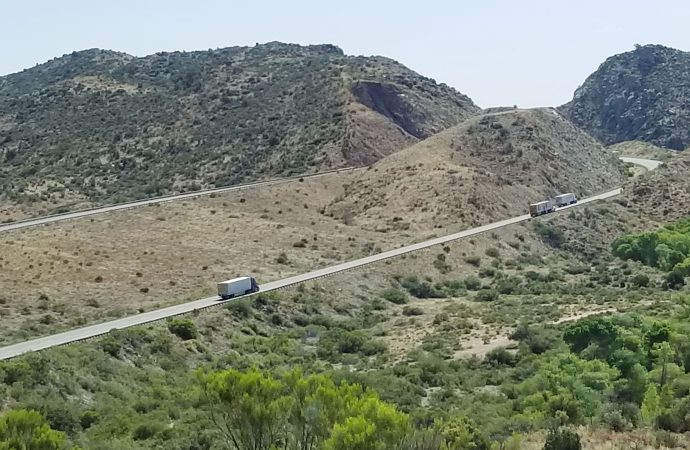In today’s interconnected world, regional connectivity and transit trade have emerged as powerful tools for economic integration and growth. For Pakistan, situated at the crossroads of South Asia, Central Asia, the Middle East, and China, these two elements are more than just economic strategies—they are strategic imperatives. Through efficient logistics, modern infrastructure, and proactive diplomacy,
In today’s interconnected world, regional connectivity and transit trade have emerged as powerful tools for economic integration and growth. For Pakistan, situated at the crossroads of South Asia, Central Asia, the Middle East, and China, these two elements are more than just economic strategies—they are strategic imperatives. Through efficient logistics, modern infrastructure, and proactive diplomacy, Pakistan has the opportunity to transform into a vital trade and transit hub, linking economies and driving regional prosperity.
What is Regional Connectivity?
Regional connectivity refers to the development and integration of transport, communication, energy, and trade networks across neighboring countries and regions. It encompasses:
-
Physical infrastructure (roads, railways, ports, dry ports, and border facilities)
-
Digital infrastructure (fiber optics, data corridors, and digital platforms)
-
Institutional linkages (customs agreements, trade treaties, and regulatory alignment)
By enabling smoother movement of goods, people, and data, regional connectivity enhances trade efficiency, reduces costs, and fosters mutual economic benefits.
Pakistan’s unique geography allows it to connect:
-
China via the northern Karakoram Highway
-
Central Asian States via Afghanistan and Wakhan Corridor
-
Iran and Turkey via Taftan and Quetta
-
India via Wagah (subject to political will)
-
And globally through Karachi and Gwadar ports
Transit Trade: Pakistan as a Natural Corridor
Transit trade involves the passage of goods through a third country en route to their final destination. Pakistan, with its extensive road and rail networks and deep-sea ports, serves as a natural transit route, especially for landlocked countries like:
-
Afghanistan
-
Uzbekistan
-
Tajikistan
-
Turkmenistan
These countries rely on Pakistan’s port facilities, primarily Karachi, Port Qasim, and Gwadar, for importing and exporting goods.
Key transit trade agreements and initiatives include:
-
Afghanistan-Pakistan Transit Trade Agreement (APTTA)
-
Quadrilateral Traffic in Transit Agreement (QTTA) – involving Pakistan, China, Kyrgyzstan, and Kazakhstan
-
TIR Convention – a global transit system now implemented in Pakistan
-
China-Pakistan Economic Corridor (CPEC) – the flagship project of the Belt and Road Initiative
The Strategic Importance of CPEC
One of the most transformative initiatives in the region is the China-Pakistan Economic Corridor (CPEC). Spanning over 3,000 km, CPEC connects China’s Xinjiang province to Gwadar Port, enabling China to access the Arabian Sea and reducing its dependency on the longer Malacca Strait route.
CPEC is not just about China—it benefits Pakistan and the entire region:
-
It enhances regional trade integration
-
Spurs infrastructure investment in highways, power plants, and railways
-
Boosts logistics capacity through Special Economic Zones (SEZs) and dry ports
-
Provides new export avenues for Pakistan and neighboring countries
By facilitating transit and trade along the corridor, Pakistan can become a central node in a larger Asian supply chain.
The Role of Digital and Institutional Connectivity
While physical infrastructure is critical, it must be supported by institutional frameworks and digital systems that ensure smooth cross-border operations.
Pakistan has made significant strides in:
-
Launching the Pakistan Single Window (PSW) for faster customs clearance
-
Implementing electronic data interchange with neighboring countries
-
Automating logistics and border processes through platforms managed by NLC and the Federal Board of Revenue (FBR)
-
Enabling real-time tracking and monitoring of cargo
Such advancements reduce trade friction, increase transparency, and foster trust among regional partners.
Regional Platforms and Multilateral Cooperation
To fully leverage its geoeconomic position, Pakistan is actively engaging in regional cooperation frameworks, such as:
-
Economic Cooperation Organization (ECO)
-
Shanghai Cooperation Organization (SCO)
-
South Asian Association for Regional Cooperation (SAARC)
-
Belt and Road Initiative (BRI)
These platforms promote collaboration on transport, trade, and energy corridors. By aligning its trade and transit policies with regional standards, Pakistan can deepen economic ties and build long-term strategic alliances.
Opportunities for Economic Growth
Regional connectivity and transit trade offer multiple economic advantages for Pakistan:
-
Increased Trade Volume
As transit routes expand, Pakistan can serve as a bridge for exports and imports between South Asia, Central Asia, the Middle East, and even Europe. -
Revenue Generation
Transit fees, port charges, and logistics services can generate significant income, boosting Pakistan’s economy and reducing dependency on traditional exports. -
Job Creation & Industrialization
Improved logistics infrastructure encourages the growth of industrial clusters, warehousing, and value-added services, particularly in border regions and SEZs. -
Balanced Regional Development
Enhanced connectivity promotes growth in underdeveloped areas such as Balochistan, Khyber Pakhtunkhwa, and Gilgit-Baltistan.
Challenges to Address
Despite the promise, several challenges must be overcome:
-
Security concerns in border areas can deter investors and logistics operators.
-
Bureaucratic inefficiencies, delays at customs, and non-harmonized regulations often disrupt transit flows.
-
Political instability and trust deficits among regional neighbors limit cooperation.
-
Lack of intermodal connectivity (integration between road, rail, and sea) hinders efficiency.
To address these, Pakistan must focus on:
-
Policy continuity and regional diplomacy
-
Upgrading road and rail infrastructure
-
Strengthening institutions and transparency
-
Investing in human capital and skills development in logistics
The Way Forward
Pakistan’s future lies in regional integration, not isolation. By enhancing both physical and digital infrastructure and actively participating in regional and global trade frameworks, Pakistan can transform into a regional trade and logistics powerhouse.
Organizations like the National Logistics Corporation (NLC), Pakistan Railways, and Port Authorities must continue to collaborate with government agencies and international partners to build sustainable and efficient trade routes.
The successful implementation of transit initiatives like TIR, expansion of SEZs, and integration into global supply chains will be vital for realizing this vision.
Conclusion
Regional connectivity and transit trade are not mere buzzwords—they are the keys to unlocking Pakistan’s economic destiny. As the region evolves, Pakistan’s ability to act as a facilitator of trade and integration will determine its role in the emerging Asian century. With the right investments, policies, and regional cooperation, Pakistan can claim its position as a leading trade corridor in the heart of Eurasia.






















